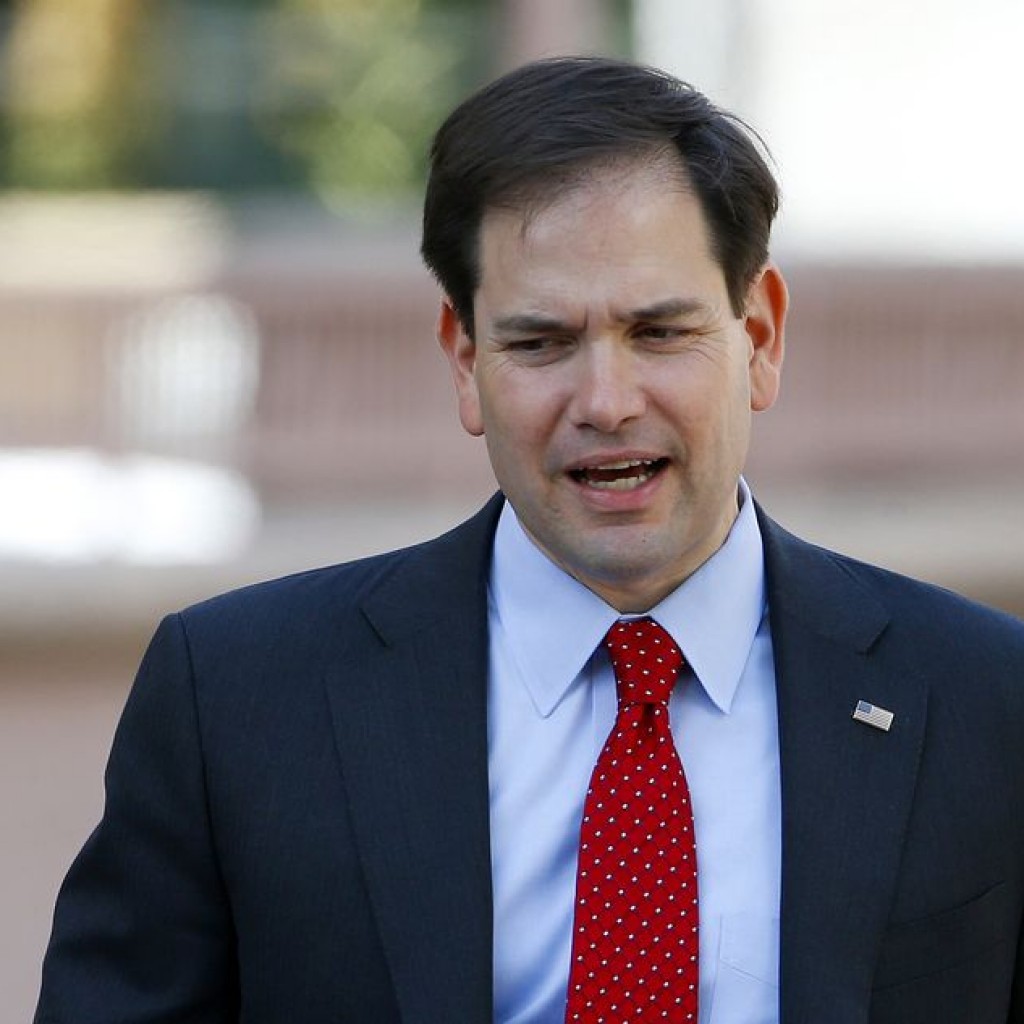
In the traffic jam that is the Republican presidential race, Sen. Marco Rubio stands out — and not just for his youth and blue-collar, Cuban-American biography.
Rubio has issued the most detailed economic agenda to aid the middle class, anchored by a book on countering the wage stagnation that has exacerbated inequality between the rich and the rest. Rivals Jeb Bush, Chris Christie and others have similarly decried the growing gap between the haves and have-nots, signaling that Republicans are eager to address a traditionally Democratic issue after seven years of disappointing economic growth.
But the party’s challenges in doing so are laid bare by Rubio’s single biggest economic proposal — a massive tax cut bound to drive up the debt by as much as $4 trillion over the first decade.
That approach is in keeping with right-leaning economic thinking, that the best way to spark growth and increase wages is to reduce the tax burden on businesses, the wealthy and investors. But that has exposed Republicans to Democratic criticism that they favor the rich. Rubio is not exempt from that, despite presenting himself as a champion of the middle class.
“What he says he wants to do and what he actually does are two very different things,” said Howard Gleckman of the Tax Policy Institute, who has studied the outline put forward by Rubio and Utah Republican Sen. Mike Lee. The institute is a research organization of the centrist Brookings Institution and liberal Urban Institute.
Rubio’s campaign said he wasn’t available for an interview, but in his writings he argues that Democratic solutions have not worked.
“For conservatives especially, this is a defining moment,” the Florida senator writes in his book American Dreams. ”The failure of government-centered, command-and-control liberalism to lift the poor and sustain the middle class is apparent as never before. Whether we are able to step forward with our own solutions — and not simply rail against the expansion of the state — will determine our future as a movement.”
In his book, Rubio floats several proposals to make college more affordable and for government to give money directly to low-income workers earning up to $40,000 a year. These ideas are not as fleshed out as his still-evolving tax plan.
His plan would set just two rates: 15 percent for those making less than $75,000 (or families earning under $150,000) and 35 percent for all making more. That would bring the top tax rate down only by four percentage points, not enough, some conservative economists complain, to stimulate growth adequately.
The main benefit to the wealthy would come from eliminating all taxes on investment income, which is how most of the nation’s richest people make their money.
“A tax reform that’d make Mitt Romney’s tax liability close to zero is going to strike most Americans as weird and not beneficial to them,” said James Pethokoukis of the conservative American Enterprise Institute. He said Rubio’s plan has economic merits but political hurdles. “It’s a heavy lift.”
The plan replaces most deductions with a credit of up to $2,000 per filer and expands the child tax credit to $2,500 to aid families, a long-held goal of some conservatives who complain the GOP’s tax policy is too focused on cutting top rates and not enough on helping regular Americans. Finally, the plan would reduce all corporate taxes to 25 percent and eliminates double taxation on business investment.
Grover Norquist, a prominent low-tax activist, praised Rubio’s tax plan, predicting its credits for middle class families would be enough to win voters’ support even if more benefit might go to the wealthy. “My 6-year-old worries her sister’s getting a bigger ice cream cone than she is,” Norquist said. “But most people are just happy to get an ice cream cone.”
Some conservatives complain Rubio’s plan does not cut the rates paid by the wealthiest Americans enough. “A 35 percent top rate is too high,” said Daniel Mitchell, an analyst at the Cato Institute.
The conservative Tax Foundation agrees with other analysts that Rubio’s tax cut would hit the treasury in its first years. But, embracing the supply-side argument that tax cuts stimulate growth, it projects that the lost revenue would be regained after 10 years by a stronger economy.
Rubio’s plan is circulating as House Republicans have discussed lowering the top rate even more, into the 20s. Some of Rubio’s GOP presidential rivals, like Sens. Ted Cruz of Texas and Rand Paul of Kentucky, have talked about a flat tax.
Republicans are too focused “on lowering the top tax rate really deeply,” Pethokoukis said. “People are very skeptical that big tax cuts for rich people are going to help the economy enough to reach the average person.”
Gleckman is one of those, but he did have praise for Rubio.
Compared with the other candidates, Gleckman said, “he’s come up with a pretty specific plan. You’ve got to give the guy some credit for putting something on the table.”
Republished with permission of The Associated Press.



